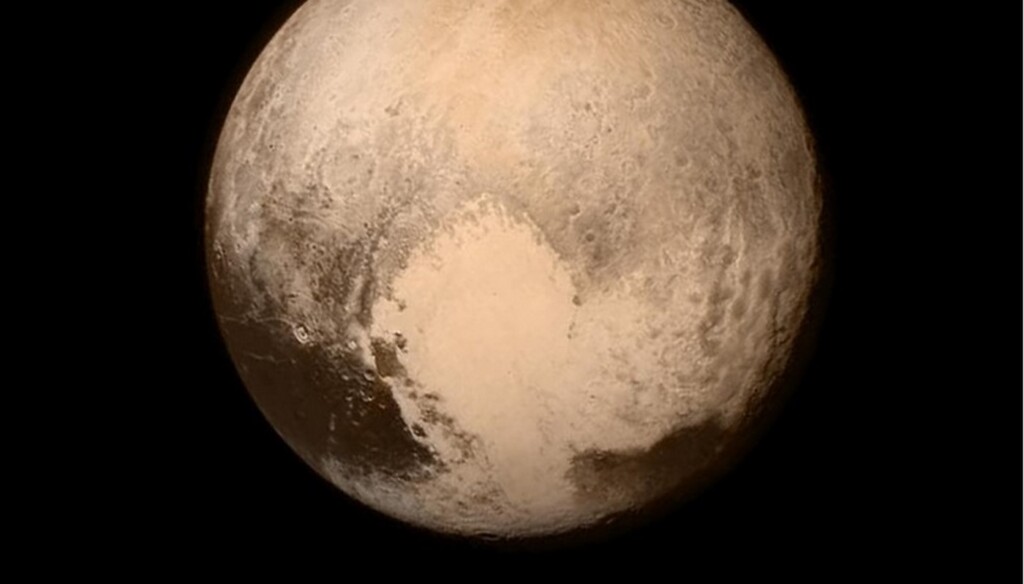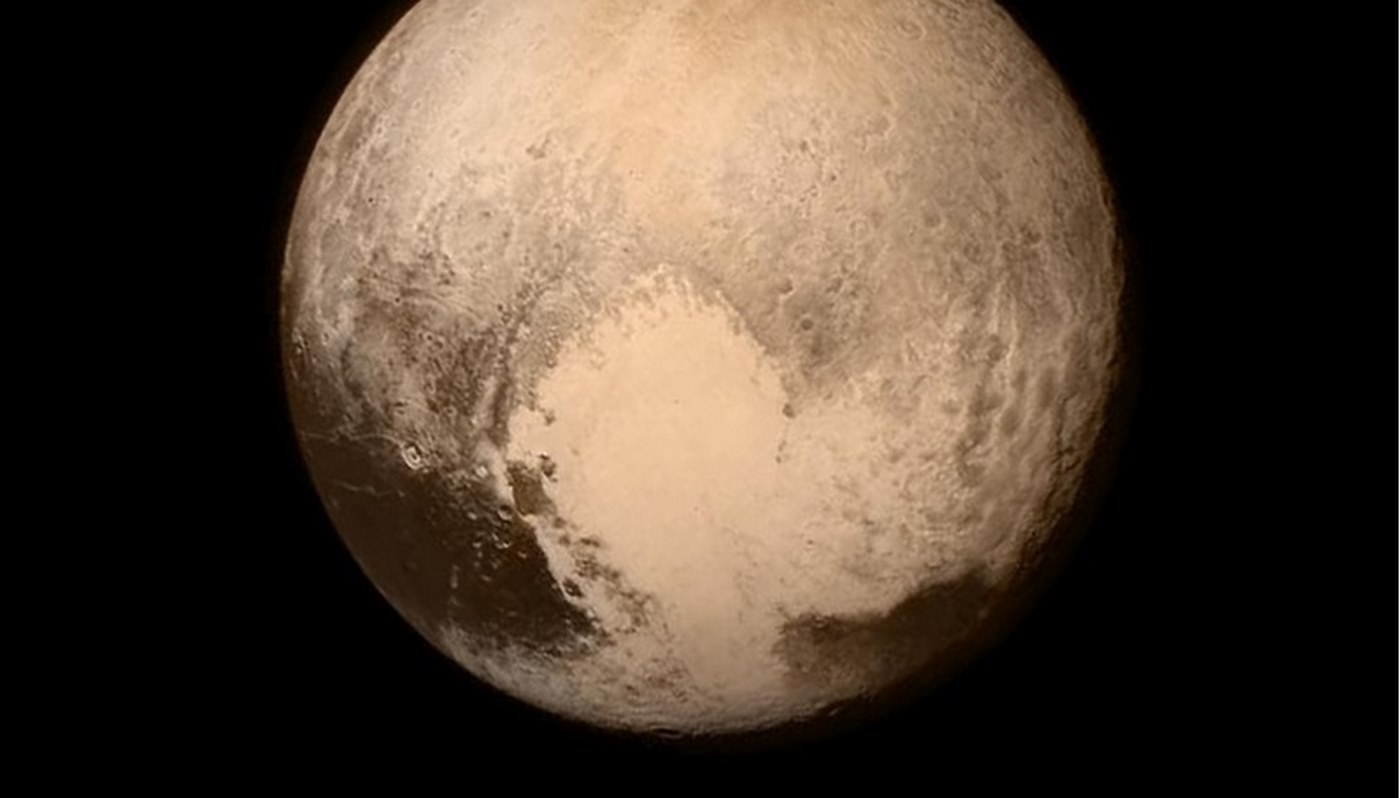
Most people know only that Pluto is a planet that wasn’t a planet that is extremely cold and far away, but it has a softer side as well.
Researchers believe the huge heart-shaped feature on the planetesimal’s surface was likely caused by a “giant and slow oblique-angle impact”.
A team of scientists from the University of Bern, including several members of the NCCR PlanetS and the University of Arizona, have used numerical simulations to investigate the origins of Sputnik Planitia, the western teardrop-shaped part of Pluto’s “heart” surface feature.
“Ever since the cameras of NASA’s New Horizons mission discovered a large heart-shaped structure on the surface of the dwarf planet Pluto in 2015, this ‘heart’ has puzzled scientists because of its unique shape, geological composition, and elevation,” the team writes in a release.
According to the research, Pluto’s early history was marked by a cataclysmic event that formed this sweet, stellar, rocky emoji: a collision with a planetary body about 360 miles (700km) in diameter, roughly twice the size of Switzerland from east to west.
“The elongated shape of Sputnik Planitia strongly suggests that the impact was not a direct head-on collision but rather an oblique one,” points out Dr. Martin Jutzi of the University of Bern, who initiated the study.
The team used Smoothed Particle Hydrodynamics (SPH) simulation software to digitally recreate such impacts, varying both the composition of Pluto and its impactor, as well as the velocity and angle of the impactor.
These simulations confirmed the scientists’ suspicions about the oblique angle of impact and determined the composition of the impactor.
The team’s findings, which were recently published in Nature Astronomy, also suggest that the inner structure of Pluto is different from what was previously assumed, indicating that there is no subsurface ocean.
The heart captured the public’s attention immediately upon its discovery. But it also immediately caught the interest of scientists because it is covered in a material that reflects more light than its surroundings, creating its whiter color.
However, the “heart” is not composed of a single element. The western part, Sputnik Planitia, covers an area of 720 by 1,200 miles (1200 by 2000 kilometers). This region is three to four kilometers lower in elevation than most of Pluto’s surface.
ALSO CHECK OUT: Webb Telescope Detects Water Vapor Just Hanging Out in Space Inside Fascinating Goldilocks Zone
“The bright appearance of Sputnik Planitia is due to it being predominantly filled with white nitrogen ice that moves and convects to constantly smooth out the surface. This nitrogen most likely accumulated quickly after the impact due to the lower altitude,” explains Dr. Harry Ballantyne from the University of Bern, lead author of the study.
The eastern part of the heart is also covered by a similar but much thinner layer of nitrogen ice, the origin of which is still unclear to scientists, but is probably related to Sputnik Planitia.
MORE SOLAR SYSTEM DISCOVERIES: Locked in a 4 Billion-Year-old Dance, Six New Exoplanets Demonstrate the Cosmic Beauty of ‘Resonant Orbits’
“In our simulations, all of Pluto’s primordial mantle is excavated by the impact, and as the impactor’s core material splats onto Pluto’s core, it creates a local mass excess that can explain the migration toward the equator without a subsurface ocean, or at most a very thin one,” explains Jutzi.
Other icy worlds like Pluto are believed to have hosted subsurface oceans, including Neptune, Saturn’s very large moon Enceladus, and its very small moon, Mimas.
SHARE This Heart-Shaped Scar In This Distant, Little Known World…




















